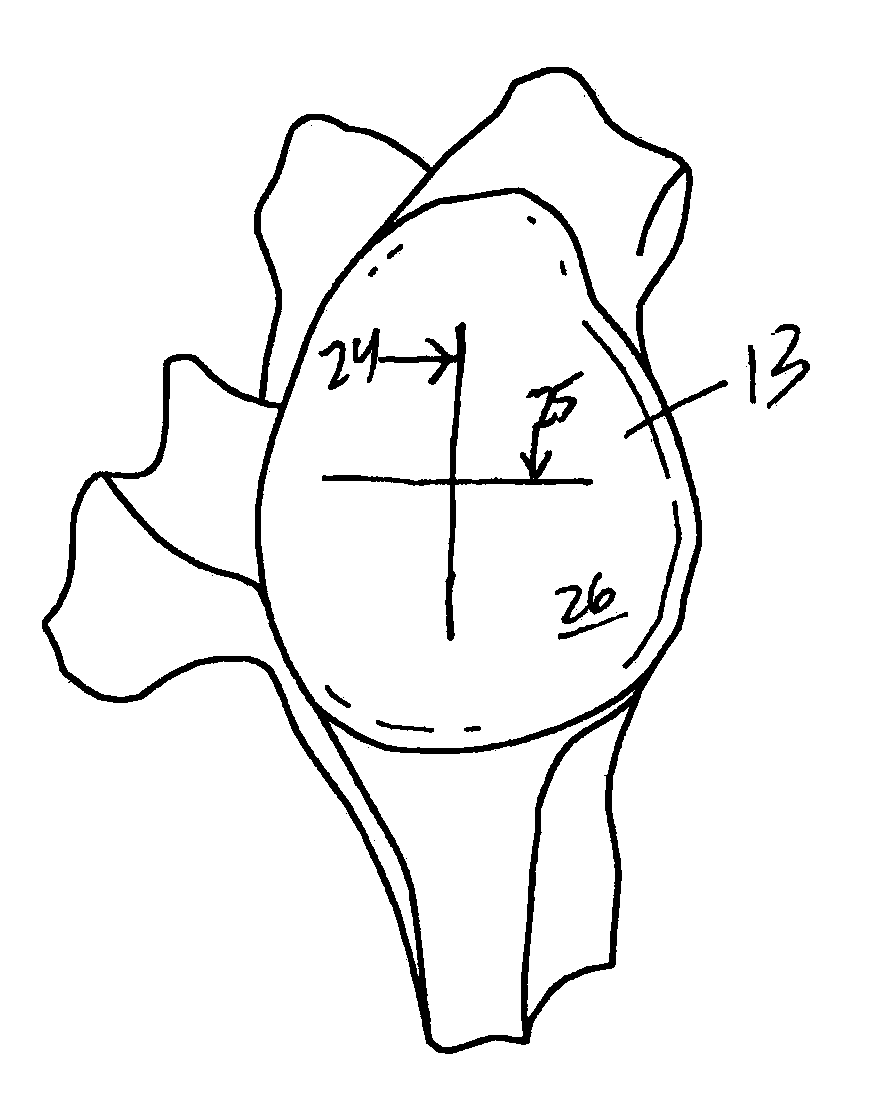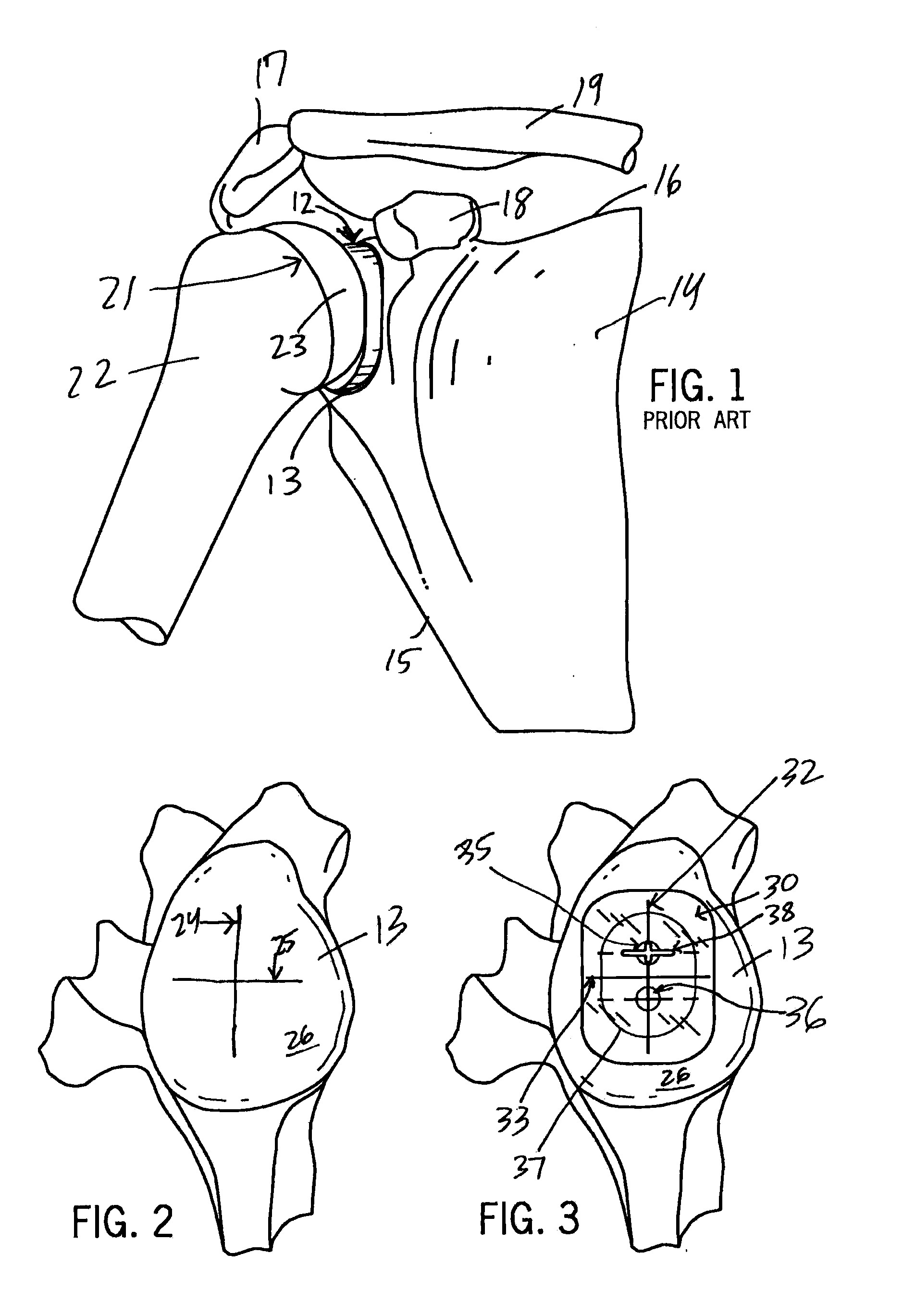Glenoid component installation procedure and tooling for shoulder arthroplasty
a technology for installing procedures and tooling, applied in the field of glenoid component installation procedures and tooling for shoulder arthroplasty, can solve the problems of severe loosen loosening of glenoid components, etc., and achieve the effect of reducing the chance of delamination of the prosthetic glenoid
- Summary
- Abstract
- Description
- Claims
- Application Information
AI Technical Summary
Benefits of technology
Problems solved by technology
Method used
Image
Examples
Embodiment Construction
[0054]One non-limiting example version of a glenoid component installation procedure and tooling according to the invention is shown in FIGS. 2 to 12. The tooling and glenoid component can be provided as a kit for use with the method of the invention.
[0055]First, the glenoid surface is prepared. The surgeon marks an approximate vertical (superior to inferior) centerline 24 and a horizontal (anterior to posterior) centerline 25 on the surface 26 of the glenoid cavity 13 with a bone marking tool such as a cauterizer. See FIG. 2.
[0056]The appropriate size of glenoid component is selected for the application, and a corresponding size of transparent template 30 is placed over the surface 26 of the glenoid cavity 13 as shown in FIG. 3. A template vertical centerline 32 and a horizontal centerline 33 on the template 30 are then aligned with the centerlines 24, 25 drawn on the glenoid surface. The surface of the template 30 includes a first printed indicia 35 showing approximate location of...
PUM
 Login to View More
Login to View More Abstract
Description
Claims
Application Information
 Login to View More
Login to View More - R&D
- Intellectual Property
- Life Sciences
- Materials
- Tech Scout
- Unparalleled Data Quality
- Higher Quality Content
- 60% Fewer Hallucinations
Browse by: Latest US Patents, China's latest patents, Technical Efficacy Thesaurus, Application Domain, Technology Topic, Popular Technical Reports.
© 2025 PatSnap. All rights reserved.Legal|Privacy policy|Modern Slavery Act Transparency Statement|Sitemap|About US| Contact US: help@patsnap.com



